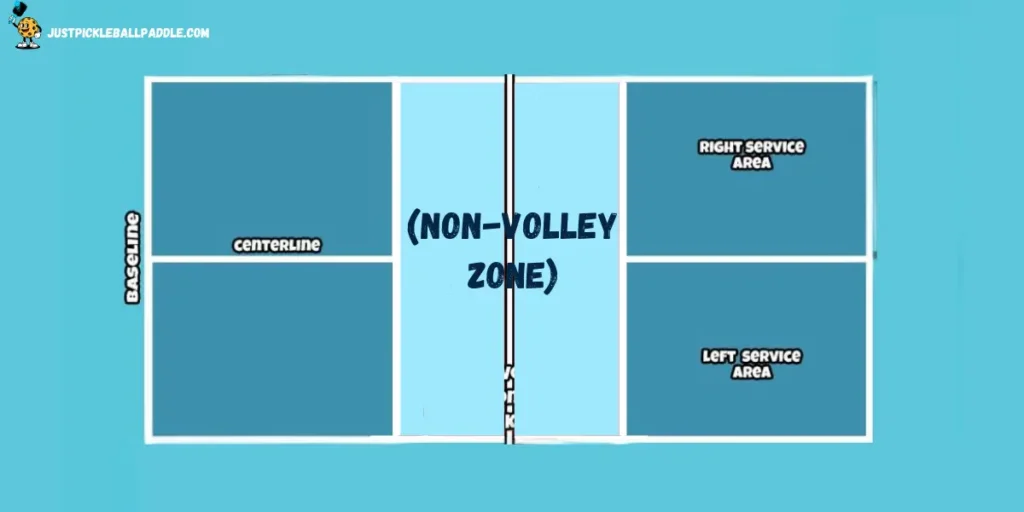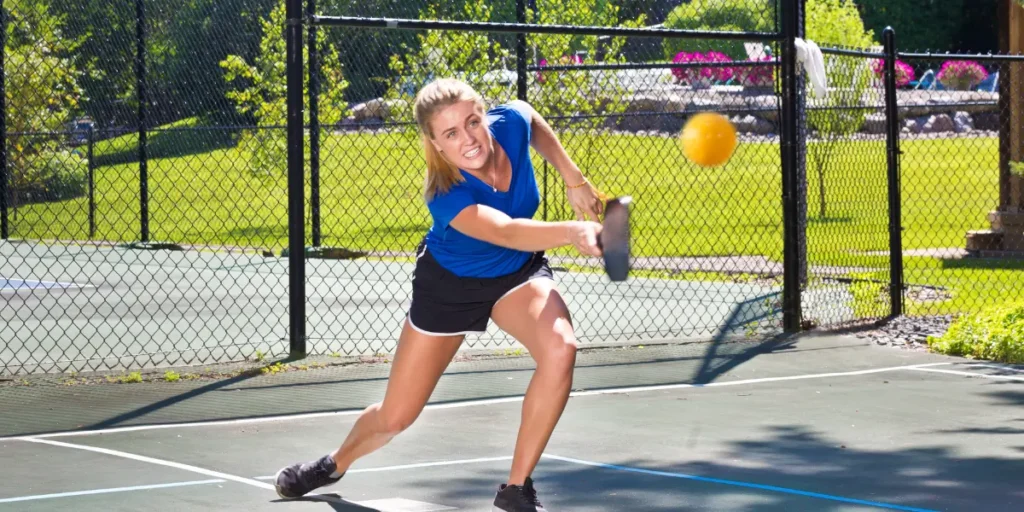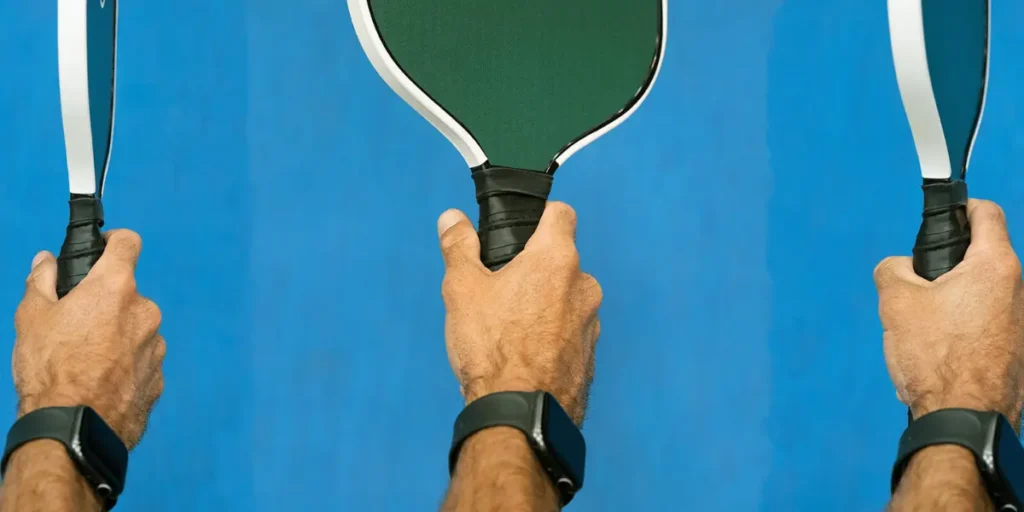Imagine you’re on the pickleball court, the game is intense, and suddenly, your opponent lobs the ball high—giving you the perfect opportunity to slam it down with a powerful spike. But wait—is spiking even allowed in pickleball? Or could this aggressive move cost you the point?
Spiking, also known as the overhead smash, is one of the most thrilling shots in pickleball, but it comes with specific rules and techniques. In this comprehensive guide, we’ll break down everything you need to know about spiking in pickleball, including the rules, techniques, myths, and expert strategies.
What is a Spike in Pickleball?
A spike, also known as an overhead smash, is a forceful and aggressive shot in pickleball, designed to make it extremely difficult for an opponent to return the ball. This shot is executed when the ball is lifted high enough to allow a player to strike it sharply downward into the opponent’s court.
The primary goal of a spike is to generate speed and a downward trajectory, making the return nearly impossible. Unlike softer, controlled shots that rely on placement and finesse, spiking is all about power, precision, and timing.
When performed correctly, a spike can quickly end a rally, leaving the opponent with little to no time to react.
Can you Spike in Pickleball? Official Pickleball Rules on Spiking
Yes, you can spike in pickleball, but it must be done within the rules. Spiking is allowed as long as the player is outside the non-volley zone (kitchen) unless the ball has bounced. The shot must be executed cleanly without making contact with the net or hitting the ball out of bounds.
The USA Pickleball Official Rulebook and the International Federation of Pickleball (IFP) provide clear guidelines on when and how spiking is permitted.
Legal or Illegal Spike in Pickleball? Understanding the Rules
✅ When Spiking is Legal:
- The player must make contact with the ball above net height but cannot violate non-volley zone kitchen rules.
- The ball should not be hit out of bounds or into the net.
- The spike must be executed while standing outside the non-volley zone unless the ball bounces first.
- The paddle must not touch the net while executing the spike.
🚫 When Spiking is Illegal:
- If the player’s momentum carries them into the kitchen after a spike, it is considered a fault.
- If the player steps inside the non-volley zone and spikes the ball before it bounces, it is a violation.
- If the ball is struck too low, sending it into the net or out of bounds, the point is lost.
- A player cannot touch the net with their body or paddle while spiking.
The Non-Volley Zone (Kitchen) and Spiking
The non-volley zone, commonly known as the kitchen, plays a critical role in determining whether a spike is legal. In pickleball, players are not allowed to volley the ball while standing inside the kitchen.

This means that if a player attempts to spike the ball without letting it bounce first and their foot is inside the non-volley zone, it results in a fault. However, if the ball bounces before the spike, the player is free to enter the kitchen and execute the shot legally.
Spiking near the net requires precise control to avoid stepping into the non-volley zone. Players can legally spike near the kitchen by ensuring their feet remain outside the non-volley zone while making contact with the ball.
If the ball bounces first, they may enter the kitchen and execute the spike without violating the rules. This skill demands both power and accuracy to keep the shot legal and effective.
Myths About Spiking in Pickleball
There are several misconceptions about spiking in pickleball that lead to confusion among players:
- Myth: Spiking is always illegal. This is false. Spiking is allowed as long as the player follows the official rules, particularly regarding the non-volley zone.
- Myth: Only advanced players can spike effectively. While experience helps, beginners can also develop a strong and controlled spike through proper technique and practice.
- Myth: Spiking always results in a kitchen violation. This is incorrect. As long as the player’s momentum does not carry them into the kitchen and they strike the ball legally, the spike is completely fair.
Understanding these misconceptions helps players refine their game and use spiking strategically without unnecessary hesitation.
How to Properly Spike in Pickleball (Overhead Smash Techniques)
Mastering the spike in pickleball requires a combination of proper technique, timing, and strategic execution. Players must focus on controlled aggression rather than sheer force to ensure the shot is both powerful and precise.

The ability to read the game, anticipate the opponent’s moves, and position oneself correctly are key to executing an effective spike.
Effective Strategies for Spiking
The best time to spike is when the opponent returns a high, slow ball, giving enough time to position and execute a forceful downward shot.
Being near the net, but staying outside the non-volley zone, allows for an ideal angle to direct the spike downward with maximum impact. Aiming for the opponent’s feet or open spaces forces them into a difficult defensive position.
Varying the placement of spikes keeps opponents guessing and prevents predictable plays. The combination of good positioning, smart shot placement, and controlled power makes spiking a highly effective offensive tool.
Common Mistakes and How to Avoid Them
Over-aggressive hitting often leads to spikes going out of bounds, resulting in lost points. Poor grip technique can cause mishits, reducing the accuracy and effectiveness of the shot. Mistiming the spike—whether too early or too late—weakens its impact and makes it easier for the opponent to return.
Players should practice maintaining a stable grip while ensuring proper foot positioning and reaction timing. Drills that focus on tracking the ball’s movement and executing controlled overhead swings help refine the spiking technique.
Adjusting power and aim based on the opponent’s positioning ensures that spikes remain a reliable and strategic part of the player’s arsenal.
Grip Techniques in Pickleball for Spiking
Having the right grip is crucial for a successful spike in pickleball. The Continental Grip, where the paddle is held like a handshake, allows for better wrist flexibility and shot control.
The Eastern Grip provides a firmer hold, generating more power while maintaining accuracy. Avoid gripping the paddle too tightly, as this can limit movement and lead to errors.

A relaxed yet stable grip ensures better control and shock absorption. Experimenting with grips helps players find their ideal technique for spiking effectively.
If you want an in-depth article about How to Hold Pickleball Paddles click the link.
Benefits and Risks of Spiking in Pickleball
Spiking in pickleball can be a game-changer, offering offensive advantages but also carrying certain risks.
A well-executed spike puts opponents on the defensive, often forcing errors and making it harder for them to return the ball. It allows players to dictate the pace of the game and apply pressure during crucial moments.
However, if not executed correctly, a spike can backfire. Overhitting can send the ball out of bounds, while mistimed spikes can be easily returned or countered by an alert opponent.
Additionally, improper technique or failure to follow non-volley zone rules can lead to faults. Players must balance power with control to maximize the effectiveness of their spikes.
Practical Tips & Drills for Practicing Pickleball Spikes
One effective drill is the targeted smash drill, where players practice aiming their spikes at specific spots on the court to improve accuracy.

Another useful drill is the reaction training exercise, which helps players develop quick reflexes by responding to lobbed shots with immediate spike attempts.
Practicing footwork drills enhances positioning, ensuring players are always ready to execute a controlled yet powerful spike.
Regularly incorporating these exercises into training sessions helps refine spiking technique and builds confidence in high-pressure game situations.
Differences Between Spiking in Pickleball and Other Racquet Sports
While spiking exists in multiple racquet sports, its execution in pickleball differs significantly from tennis, badminton, and volleyball.
In tennis, overhead smashes are often more powerful due to the larger racket and heavier ball, allowing for topspin and angles that are not possible in pickleball.
Badminton smashes, though similar in motion, require more finesse since the shuttlecock is lightweight and slows down in the air.
Volleyball spikes are executed over a high net with an emphasis on height and downward force.
In contrast, pickleball spikes must be controlled due to the smaller court, slower-moving ball, and kitchen rules restrictions. The limited space and lower net height require players to focus on precision, strategy, and proper positioning rather than sheer force.
FAQs
No, spiking the ball directly into the kitchen is not allowed if the player is standing inside the non-volley zone. However, if the ball bounces first, the player can legally enter the kitchen and spike it.
Yes, spiking is legal in doubles play as long as it follows standard rules. However, coordination with a partner is crucial to avoid unforced errors or interfering with each other’s shots.
Yes, with proper practice and drills, beginners can develop spiking skills. Focusing on timing, positioning, and controlled power helps improve spike execution over time.
Conclusion
Spiking in pickleball is a powerful technique that, when used correctly, can give players a major edge in the game.
While it adds an aggressive element to the gameplay, understanding the rules, especially those related to the non-volley zone, is crucial to avoid faults. Grip techniques, foot positioning, and timing play a key role in making a spike both effective and legal.
By applying the right strategies and avoiding common mistakes, players can incorporate spiking into their game successfully.
Whether you are a beginner refining your technique or an experienced player looking for better precision, consistent practice, and smart shot placement will make your spikes more effective and help you control the game.

